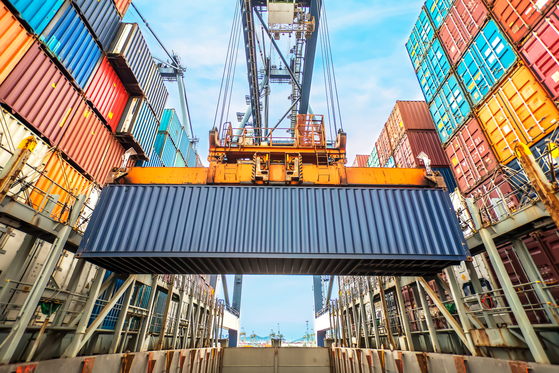Welcome to Thomas Insights — every day, we publish the latest news and analysis to keep our readers up to date on what’s happening in industry. Sign up here to get the day’s top stories delivered straight to your inbox.

In a recent episode of the Thomas Industry Update Podcast, Andrew Blasi Jr., director at Crowell and Moring International, returned to share his predictions about what trade will look like in a post-COVID-19 world.
In conversation with podcast host and Thomas CEO Tony Uphoff, Blasi made some interesting points: the 2018-2019 trade climate was already tense, but the current pandemic is on a “completely different level,” he explains. Blasi predicts that the pandemic’s impacts will exceed those of the 2008 financial crisis.
However, rather than dwelling on the far-reaching impacts of the global pandemic, Blasi encourages listeners to focus on recovery by sharing actionable advice on how to move forward and support global trade. Rebounding will be easier said than done, of course, but according to Blasi there are a few key factors that will redefine how the world economy runs in the future. The most important factor, he says, will be the global supply chain.
Here are some of the key steps Blasi advises businesses to take in an effort to ensure their operations are ready to run smoothly once allowed to officially reopen.
How to Prepare Your Supply Chain to Resume Operations After COVID-19
1. Steer Clear of Just-in-Time (JIT) Manufacturing
Once COVID-19 recovery begins, Blasi anticipates a gradual decline — and eventual end — of JIT management. The method previously proved effective in keeping inventory costs low by aligning raw material orders with production schedules. However, as delays, shortages, and demand spikes impacted supply chains across nearly every industry, the management method proved that it was not resilient to disruptions.
“Just-in-time manufacturing is perhaps one of the greatest industrial advances that have been born through globalization,” Blasi explains. “But, going forward, businesses may now need larger inventories of inputs as well as greater sourcing diversity going forward into the future. And this could require many companies to onboard greater capital on the supply side, and it also could produce new market inefficiencies that firms are really just going to have to grapple with for some time to come.”
So, as the JIT era comes to a close, what will be the supply chain’s next priority? The answer likely lies in diversification and localization.
“There is no doubt in my mind that both larger and smaller nations around the world are going to reexamine their health product supply chain, a full stop when we think about medical equipment, active pharmaceutical ingredients, even things like vaccines,” Blasi explains. “We should even expect or anticipate that some countries could push to localize production in certain industries such as those that we’ve just talked about or set other requirements.”
2. Incorporate 3D Printing to Enhance Resilience
Blasi predicts 3D printing will be industry’s secret weapon in building up supply chain resilience. The technology gives businesses the opportunity to localize, access supplies at a lower cost, and gain an overall comparative advantage.
“For listeners that haven’t given 3D printing a look for their own solutions to enhancing resilience, I think now would be a very interesting time to do so as supply chains change,” Blasi recommends. “Industrial businesses ought to really consider what role such solutions might serve in building up their own supply chain resilience.”
Even before COVID-19 cases spiked in the U.S., 3D printing offers a quickly scalable solution to close gaps in supply chains for critical medical components, namely in an Italian hospital for ventilator replacement valves, and on numerous other occasions stateside since.
Blasi predicts that the demand for additive manufacturing as a method of strengthening supply chains is likely to increase going forward.
3. Scrutinize the Ethics of Your Supply Chain
Even before COVID-19 caused major supply chain disruptions, consumers were calling for corporate social responsibility and more transparency in supply chains. Blasi predicts the demands will reach new heights from customers, other supply chain members, and even governments to ensure reliability in times of crisis.
“Governments around the world, both national and provincial, are going to become more active in the marketplace, so I think businesses need to prepare for that,” Blasi says. “Through the current emergency we’re seeing worldwide, there is clearly increased pockets of bribery risk and fraud risk that is confronting companies and governments around the world today.”
To prepare for the demand for ethical supply chain practices, Blasi recommends looking deeper into your sourcing lines.
“I would suggest that now is an excellent time for businesses — industrial or otherwise — to take a really close look at their third-party supplier risks and supply chains as those sourcing lines are being reconstituted or reconsidered.”
To listen to the full podcast episode and hear what else Blasi shares, stream on Apple Podcasts, Spotify, Stitcher, or Soundcloud.
Image Credit: MOLPIX / Shutterstock


